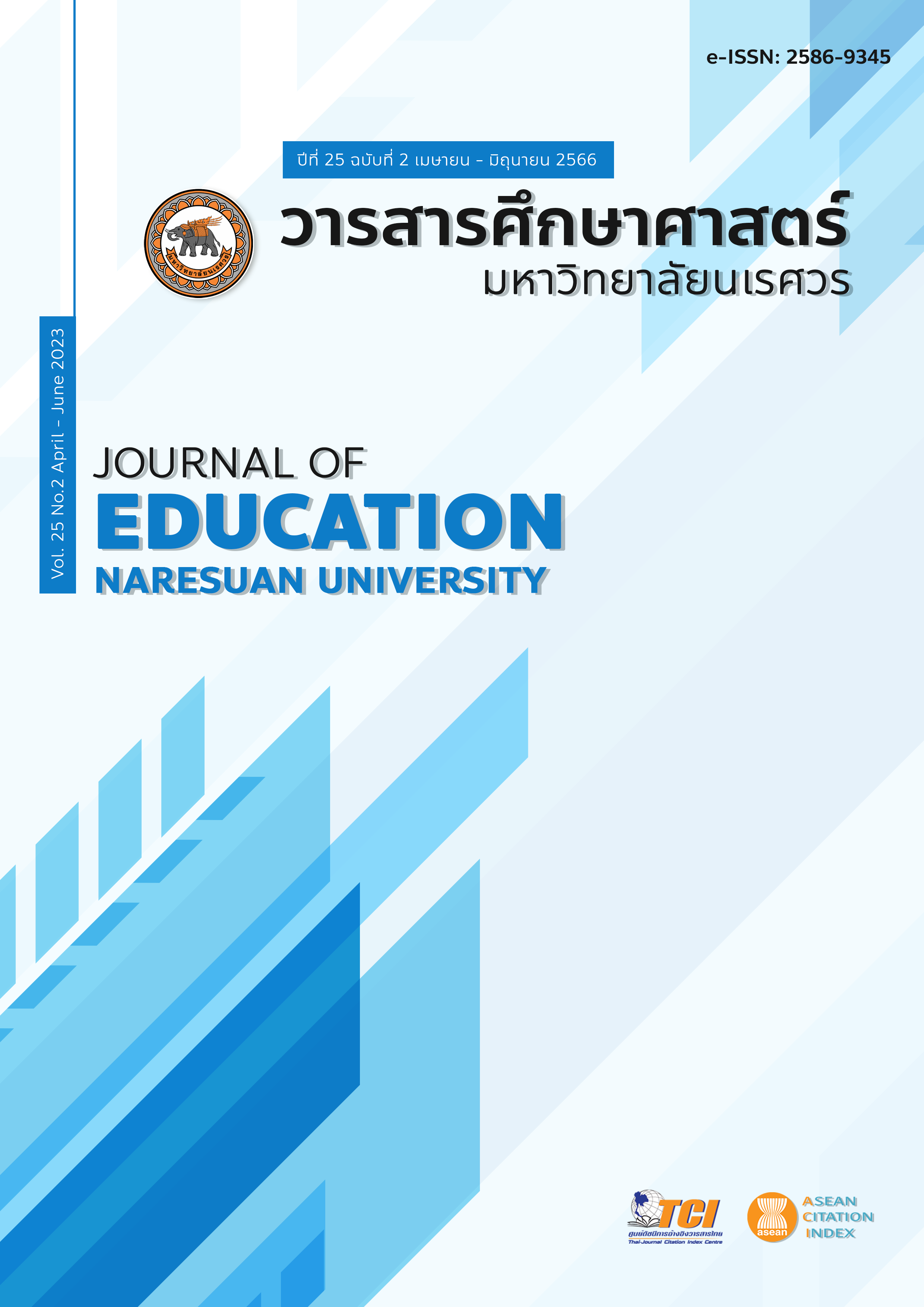THE DEVELOPMENT OF LEARNING SKILL THROUGH DIGITAL MEDIA INDICATORS FOR UNDERGRADUATE STUDENTS การพัฒนาตัวบ่งชี้ทักษะการเรียนรู้ผ่านสื่อดิจิทัลของนิสิตระดับปริญญาตรี
Main Article Content
Abstract
The purpose of this research was to develop learning skills through digital media indicators for undergraduate students, and to check the structural straightness learning skill through digital media indicators for undergraduate students. The samples were 200 undergraduate students of Naresuan University. The samples received from Multi-stage Random Sampling. The collection data instrument includes a conformity assessment between Terminology definition and learning skill through digital media indicators for undergraduate students, a conformity assessment of a measure of learning skill through digital media for undergraduate students, and a measure of learning skill through digital media for undergraduate students. The confirmatory factor analysis method by program was used for data analysis. The findings revealed that;
1. The Development results learning skill through digital media indicators for undergraduate students. Using document synthesis and assess conformity by experts. In conclusion, learning skills through digital media indicators for undergraduate students. There are 4 indicators include digital media accession, digital media selection of use, digital media evaluation and digital media creation.
2. The results Investigation of the structural correctness of learning skill through digital media indicators for undergraduate students. That were created using the confirmatory factor analysis method model. In conclusion, learning skills through digital media indicators model for undergraduate students. There are goodness of fit measurement as follows, chi-square as 0.420 (p = 0.811), at degree of freedom as 6, comparative fit index (CFI) as 1.000, tucker Lewis index (TLI) as 1.013 Standard Root Mean Square Residual (SRMR) as 0.005 and (root mean square error of approximation (RMSEA) as 0.000. There is an indicator weight value between 0.71-0.823 and statistically significant at the .05 level for all indicators. Show that learning skill through digital media indicators model for undergraduate students, The created are construct validity.
Article Details

This work is licensed under a Creative Commons Attribution-NonCommercial-NoDerivatives 4.0 International License.
The owner of the article does not copy or violate any of its copyright. If any copyright infringement occurs or prosecution, in any case, the Editorial Board is not involved in all the rights to the owner of the article to be performed.
References
Calvani, A., Fini, A., & Ranieri, M. (2009). Assessing digital competence in secondary education. issues, models and instruments. In M. Leaning (ed.). Issues in Information and Media Literacy: Education, Practice and Pedagogy. Santa Rosa, California: Informing Science Press.
Cordell, R. (2013). Information literacy and digital literacy: Competing or complementary? Communication In Information Literacy, 7(2), 177-183.
Hobbs, R. (2010). Digital and media literacy: A plan of action (knight commission on the information needs of communities in a democracy). Washington, DC: Aspen Institute & Knight Foundation.
Martin, A., & Grudziecki, J. (2006). DigEuLit: Concepts and tools for digital literacy development. Innovation in Teaching and Learning in Information and Computer Sciences, 5:4, 249-267, DOI: 10.11120/ital.2006.05040249
Media Awareness Network. (2010). Digital literacy in Canada: From inclusion to transformation. Retrieved 12 June 2016, from http://www.ic.gc.ca/eic/site/028.nsf/eng/00454.html
Ministry of Education. (2009). Thai qualifications framework for higher education 2009. Bangkok: Office of the Higher Education Commission. [in Thai]
Ministry of Information and Communication Technology. (2016). Digital Development Plan for Economy and Society. Bangkok: Ministry of Information and Communication Technology. [in Thai]
Office of the Education Council. (2017). The 12th National Education Plan (2017-2031). Bangkok: Prikwhan Graphic. [in Thai]
Office of the National Economic and Social Development Council. (2017). The 20-Year National Strategy (2018-2037). Bangkok: Office of the National Economic and Social Development Council. [in Thai]
Soby, M. (2003). Digital competence- from education policy to pedagogy: The Norwegian context. (p.129, 134). In Lankshear, C., & Knobel, M. (Eds.) Digital literacy: Concepts, policies and practices. New York: Lang Pub.
Soper, D. S. (2019). A-priori Sample Size Calculator for Structural Equation Models [Software]. Available from http://www.danielsoper.com/statcalc/calculator.aspx?id=89
Srisa-ard B. (2000). Preliminary research (6th ed.). Bangkok: Suveiriyasarn. [in Thai]


